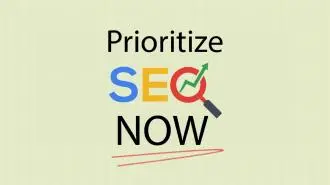Summary / TL;DR
The entire Australian digital marketing landscape is experiencing a systemic collapse. Organic traffic has dropped 38% year-over-year while Google Ads costs increased 12.88%, affecting every business regardless of their agency. This isn’t poor performance; it’s a fundamental shift in how search works. Google is losing market share to AI-powered search like ChatGPT and Perplexity, with 58.5% of searches now resulting in zero clicks as users get answers directly from AI without visiting websites. Meanwhile, 98% of Australian websites remain completely unprepared for AI search. sitecentre® has built over 4,000 AI-ready sites (nearly 15% of all AI-ready Australian websites) using llms.txt, Markdown variants, and intelligent schema implementations that offshore WordPress agencies can’t replicate. While most agencies are still selling 2015 SEO tactics that lead to Google penalties, sitecentre® has been building for AI search for years. This article breaks down what’s really happening, why traffic is down for everyone, and how to position for where search is actually heading.
The past 18 months have been a genuine learning experience.
sitecentre® had grown to a team of 9 people, becoming one of the fastest-growing digital marketing agencies in Australia.
Growth brought recognition (founder Brodey Sheppard was awarded Australian Young Entrepreneur of the Year in 2024, among other industry accolades), but it also brought challenges that rapid expansion often creates.
The reality was that communication with clients suffered as time was consumed by managing growth rather than delivering the work that had built the business in the first place. The exponential increase in operational complexity created gaps in the client experience.
AI was fundamentally reshaping how search works, the Australian economy was creating pressure on every business, and the digital marketing landscape was shifting faster than most agencies could adapt.
Clients started leaving for various reasons. Some left because other agencies were making promises sitecentre® knew couldn’t ethically be delivered.
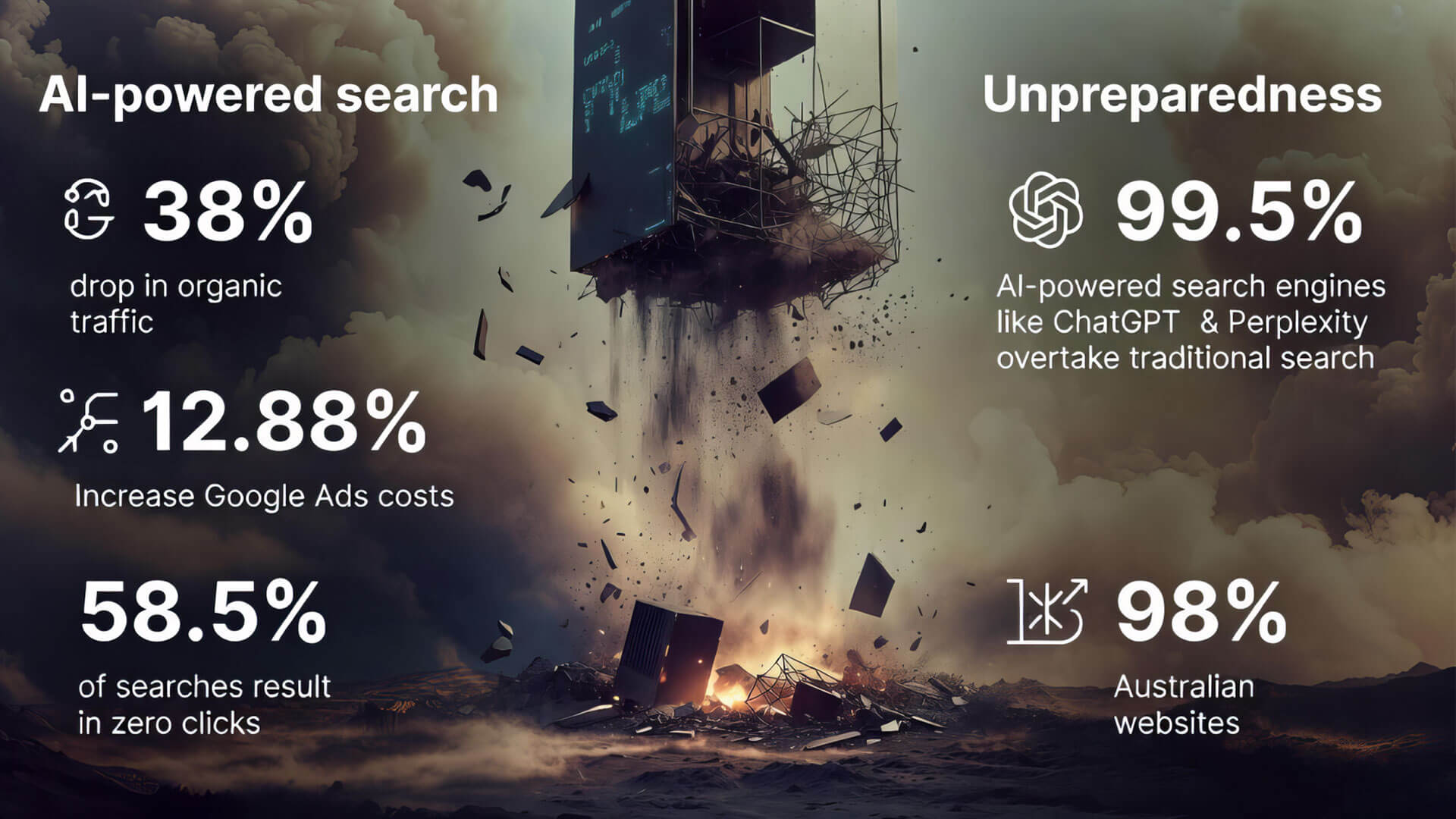
Some left due to genuine budget pressures resulting from economic conditions, or due to their own closure or business redirections. Some left because the communication gaps created by managing rapid growth made them feel less supported than they deserved.
Very rarely was it about results; the work was still delivering. The reasons were more complex than any single factor.
The reality is that sitecentre® could have grown faster by taking the easy path.
The fact is, for every client who left, we had two genuine opportunities to replace them. All it would have required was telling desperate business owners what they wanted to hear: “Guaranteed page 1 rankings.” “Fix your traffic in 90 days.” “Get you back to 2019 numbers.” The scripts were ready. The desperation in the market was real. The opportunity was there.
The choice was honesty over easy growth. That choice cost us short-term revenue, but it was the right decision for long-term integrity and aligned with our code of ethics, under which we operate. As the director, I’ll forever choose to forgo revenue rather than compromise our ethics.
Sometimes, the best path forward requires taking a step back first.
We’re now leaner and founder-led, which has brought a level of focus that didn’t exist during hyper-growth and, in all honesty, hasn’t existed in a very long time.
A spark had burnt out, burnout was real, and it showed. My passion is back, my spark is back, and our results will speak louder than ever before.
sitecentre® is also stronger, more deliberate, and better positioned for what’s actually coming in search and AI. The lessons learned from managing rapid expansion (and the subsequent refocusing on core strengths) have created clarity about what matters and what doesn’t.
What follows is an honest assessment of what’s happening in search, AI, and Australian business right now, without the sugarcoating or sales pitch that often dominates industry content.
For any agency that would like to challenge any of the claims within the article. I invite you to do so. We’ll be happy to show you, with your own clients, and publish our findings for you. These are well-researched, undisputable claims. If you would like to put your hand up, we would be pleased to educate you.
Sit back, relax, and we’ll break it all down.
Why Lean and Founder-Led Is Actually Better Now
Addressing the obvious question directly: yes, the team is smaller now.
The reasons for downsizing were complex, interconnected, and financially necessary. Rapid growth created operational challenges that weren’t sustainable.
Economic pressures affected everyone. Most importantly, we needed to refocus on our core strengths rather than trying to scale beyond what could be delivered with the level of quality clients deserve.
The outcome, somewhat unexpectedly, has made us better for clients in several ways:
- No overhead pressure to take on bad clients: Those 50-person agencies have $400k+ monthly overheads. They need to say yes to everyone, whether they can actually help or not.
- Direct access to the person who built everything: Clients aren’t getting a junior account manager reading from a script. They’re working directly with the founder who came up with the strategies, built their website, coded the CMS, developed the AI integrations, and understands this technology at the architectural level.
- No layers of people who don’t understand the technology: The Typical agency chain consists of Sales, Account Manager, SEO Lead, and then Junior Implementer. Four layers of “telephone game” between strategy and execution. sitecentre® doesn’t have that problem.
- Automation of 400+ technical checks reduces the need for manual labour: The CMS automatically handles what takes other agencies teams of people to check and implement manually.
- Leaner means faster decisions and faster implementation: sitecentre® deployed llms.txt and markdown variants across 4,000+ sites in 22 hours. How long would a 50-person agency take to get approvals and coordinate that?
The agencies with 50 people are giving you the junior team. sitecentre® clients get the founder, now, and into the future.
What We’re Covering
This isn’t a sales pitch. It’s an honest assessment of:
- The state of search and SEO in 2025 – 2026: why traffic is down 40–60% for nearly everyone
- How AI and LLMs are changing discovery, and why Google is in a death spiral
- What sitecentre® has built that others can’t copy, and why that matters for the next decade
- What the data actually says, with sources, not assumptions
- Where we’re heading next: our roadmap and why timing matters
The Perfect Storm: Why Everyone’s Traffic Is Down 40–60%
Economic Pressure No One Can Escape
The uncomfortable truth needs to be stated clearly.
The Australian economy is putting unprecedented pressure on businesses in ways that go beyond simple recession concerns.
The symptoms most businesses are experiencing aren’t unique:
- More invoice disputes and slower payments; customers are cash-strapped
- Lower average order value and job size; people are buying less, spending less
- Longer decision cycles and more quote shopping; every dollar is scrutinised
- “Lowballers” taking jobs, then crying about being quiet themselves
This isn’t a marketing problem. This is a macroeconomic problem affecting everyone.
The inflation and spending paradox: The Reserve Bank of Australia reported official inflation rates of 7.8% (2022), 5.4% (2023), 3.8% (2024), and 3.8% (October 2025). However, independent economists and business groups consistently report actual cost increases significantly higher.

Roy Morgan Research consistently measures inflation expectations 2–3 percentage points higher than official CPI figures (4.8% vs 2.4% in April 2025), with small business cost increases frequently exceeding these consumer-level measurements.
We could delve into why it’s in the RBA’s best interest to report lower inflation figures (preventing economic panic, avoiding bank runs, and maintaining investor confidence in the ASX and AUD stability concerns). Still, we won’t go too far down that rabbit hole.
The point is that small businesses are experiencing cost increases that far exceed official consumer price index measurements, whilst their customers have less disposable income than the CPI suggests.
Meanwhile, consumer spending patterns have undergone a dramatic shift.
The phenomenon of “ doom spending” (discretionary spending on experiences and entertainment despite economic concerns) means shopping centres and theme parks appear busy. Yet, critical services like trades, professional services, and essential home maintenance are seeing significant declines in demand.
According to ABS Retail Trade data, this disconnect between visible retail activity and demand for essential services is creating misleading signals about the state of the economy.
Adding to the pressure, Australia’s household savings ratio has declined significantly, with many households now spending more than they earn.
According to ABS National Accounts data and the RBA’s November 2025 Statement on Monetary Policy, household financial stress is at elevated levels, with savings buffers accumulated during the COVID-19 pandemic now largely depleted. Put simply, Australians have less available cash than official statistics might suggest.
The Data Picture (With Sources)
The numbers tell a consistent story across multiple authoritative sources:
eCommerce sector: According to Australia Post’s 2025 eCommerce Industry Report, while Australians spent a record $69 billion online in 2024 (up 12%), the average basket size plummeted 2.1% to just $95, the lowest in a decade. The NAB Online Retail Sales Index (July 2025) shows year-on-year growth of 16.2%, but key categories are contracting: Fashion declined by 8.7%, and Home & Garden fell by 7.6%. More transactions, smaller orders; classic cost-of-living pressure behaviour.
Trades and construction: The Australian Bureau of Statistics Building Activity report (June 2025) shows continued pressure on the construction sector, with dwelling commencements and building activity remaining below historical averages.

Organic traffic overall: According to SEMrush Sensor Australia data, there is an average 38% year-over-year decline in commercial queries in Australia.
Google Ads costs: According to WordStream’s 2025 Google Ads Benchmarks, the average cost per click increased 12.88% year-over-year (April 2024 to March 2025), with 87% of industries experiencing higher CPCs. Some sectors, like Beauty & Personal Care and Education, saw increases exceeding 40%.
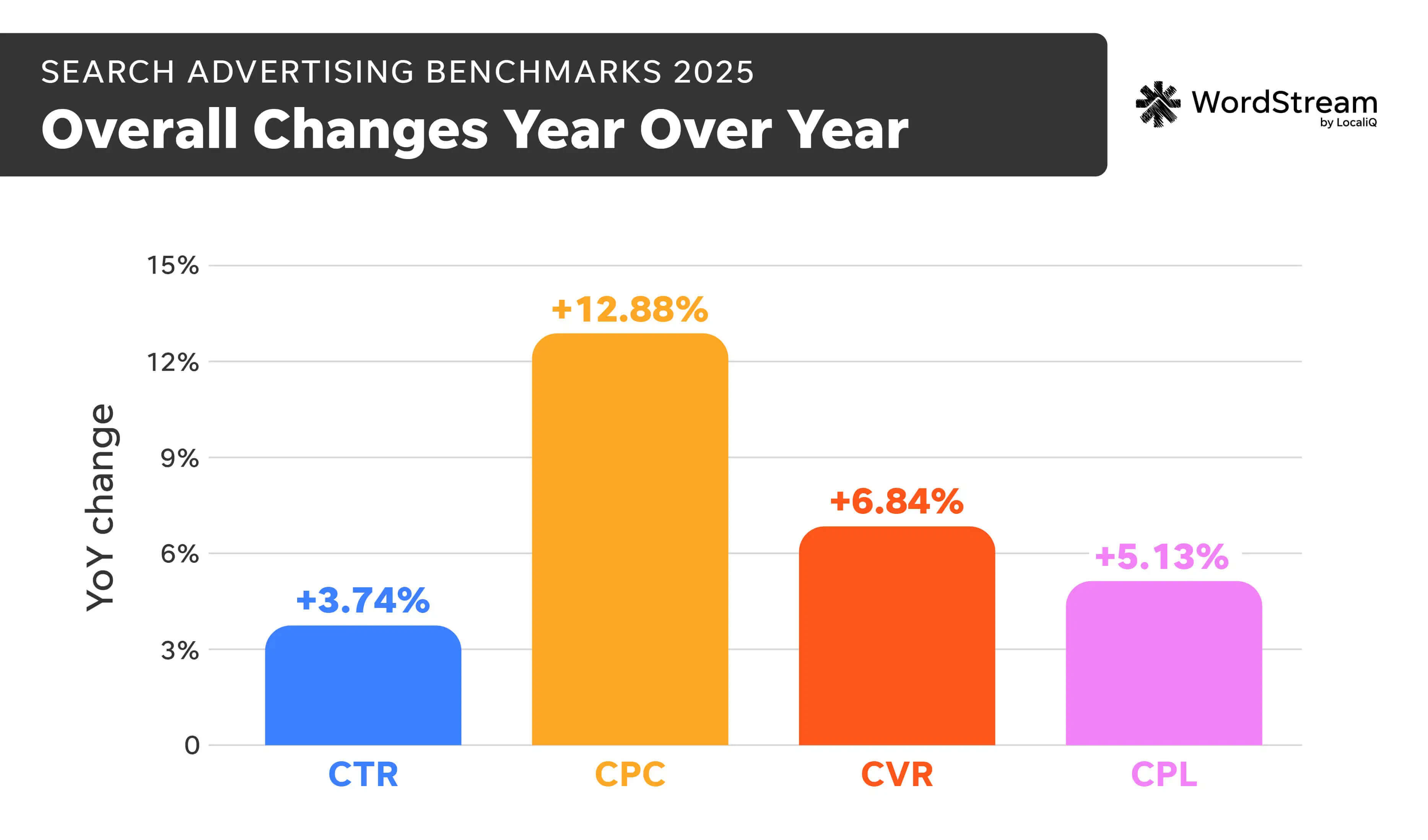
The average cost per lead rose 5.13% in 2025 to $70.11, following a 24% increase in 2024, a 10% increase in 2023, and a 17% increase in 2022. A sustained upward trend that has compounded costs significantly over the past four years.
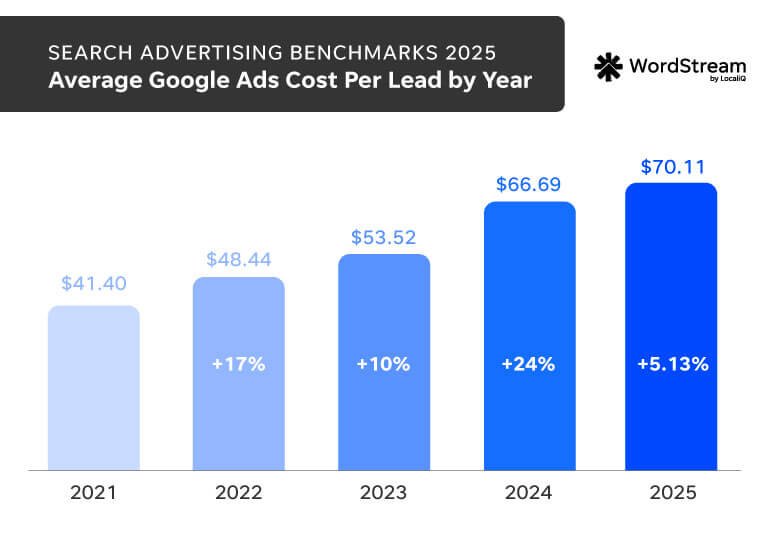
The pattern is clear: traffic down, costs up. Every business is facing this squeeze.
Why PPC Costs Are Skyrocketing (Our Theory, Backed by Data)
Most agencies won’t tell you this, but Google has a revenue and business problem, and businesses are paying for it.
According to Alphabet’s Q3 2025 earnings report, advertising revenue (Search, YouTube, and Network combined) totalled $74.2 billion in Q3 alone, representing approximately 72.5% of Alphabet’s total revenue. Annualised, this represents nearly $297 billion in advertising revenue.
As a publicly traded company, Alphabet is expected to post record profits consistently; shareholders demand growth, not decline. Even a modest 5–10% loss in search volume (as Gartner predicts) translates to $15–30 billion in lost annual advertising revenue.
As Google loses market share to ChatGPT, Perplexity, and other AI-powered generative answer engines, this creates extreme pressure to squeeze harder on the remaining revenue source: search advertising. Drastic actions follow drastic circumstances.
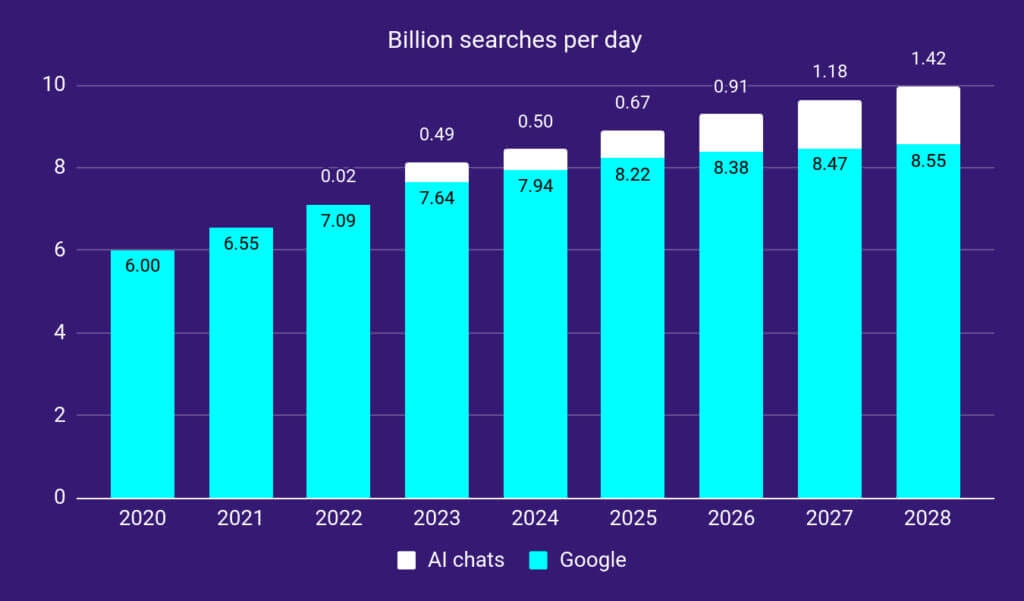
Evidence of deliberate organic degradation:
Looking at any commercial search result right now reveals:
- Unknown businesses with zero reviews ranking in the top 3
- Slow, broken websites outranking fast, professional sites
- Low-quality content beats comprehensive, expert content
- Heavily documented Google ranking factors are being ignored
- Newly established, faceless landing pages are outranking household brands.
The common consensus in online community groups, supported by research, is that Google seemingly deliberately degrading organic quality to drive trust back to paid ads.
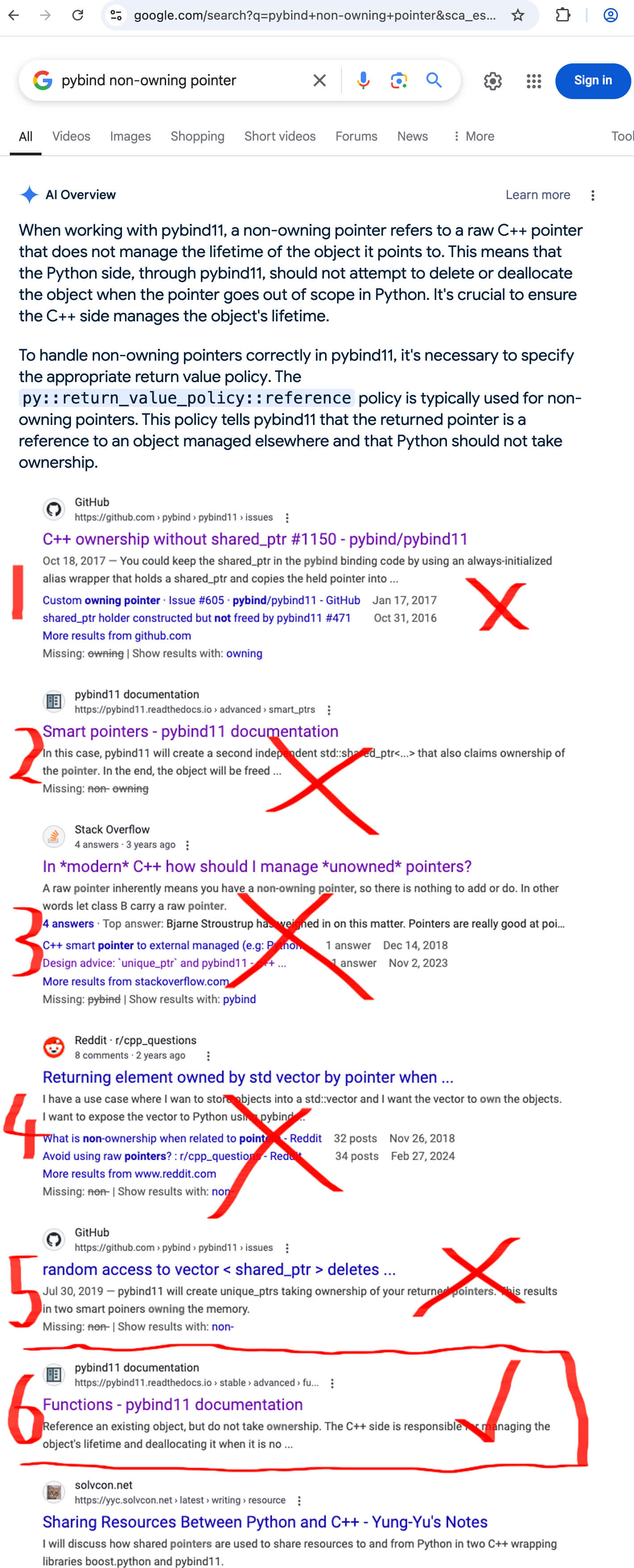
Research on banner blindness from Nielsen Norman Group shows users have developed “ad blindness,” automatically scrolling past anything resembling an advertisement. Multiple studies, including research from First Page Sage and industry CTR analyses, consistently show that organic results receive 10–20X more clicks than paid ads in many categories, despite ads appearing first. Many users report they deliberately skip past ads to reach what they perceive as “real” or “unbiased” results.
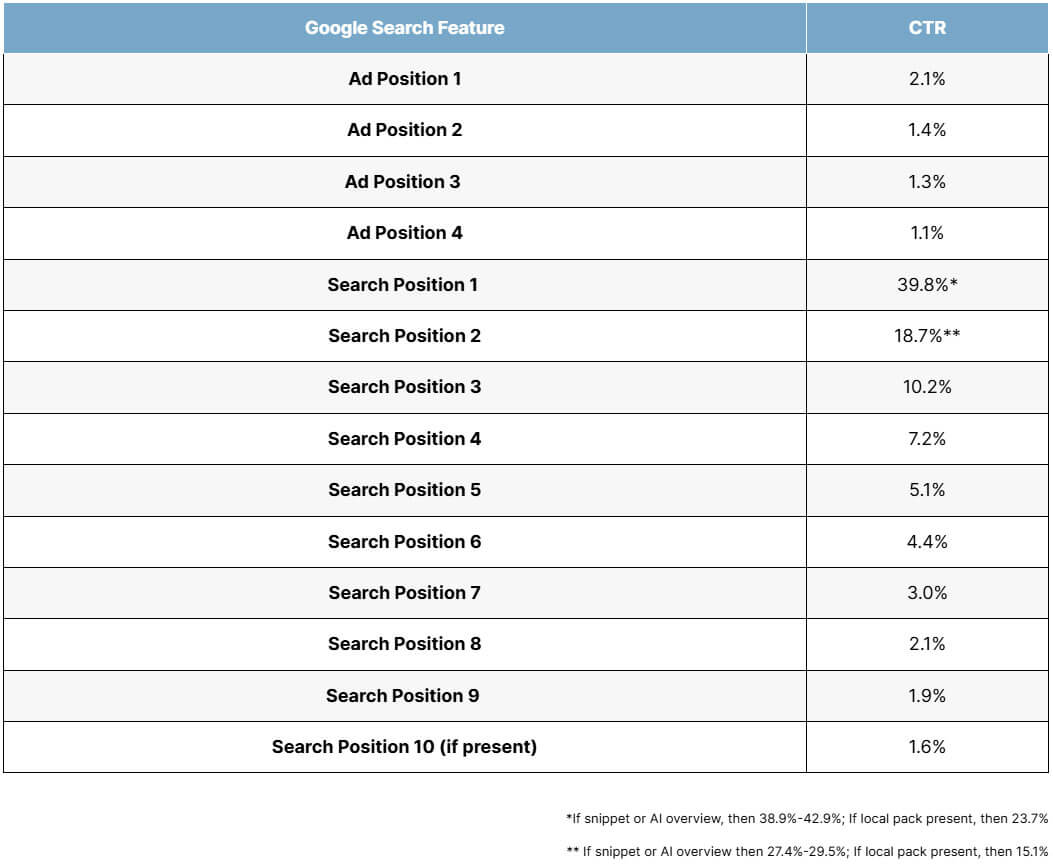
The widely supported theory: Businesses that stopped running ads have seen organic decline as a forcing mechanism to bring them back to paid. Ethical? No. Proven? Near impossible. However, through comprehensive research and data collection, it becomes clear.
Websites with a history of running sizable budgets that maintained ad spend saw less severe organic decline than those that paused ads.
Is this definitely provable? No. However, the correlation is too consistent across hundreds of thousands of examples to be a coincidence, and it makes sense.
If I were running ads but decided I didn’t need them anymore, organic search was providing more than enough leads to justify pausing my ad spend. What is a sure way to bring me back? Take away my free organic traffic.
It’s working too. Businesses are returning to Google Ads, businesses that gave it up years ago, who built their SEO up over the years, invested in the right way, built up free leads, only for Google to turn around and say, “We need you back”.
The Searches Are Still Happening, Just Differently
The critical insight that changes everything is that people haven’t stopped having problems. They’ve stopped using Google to solve them.
According to BrightEdge’s May 2025 research, Google AI Overviews have driven a 49% increase in total search impressions, fundamentally changing how users interact with search results.
SparkToro research (analysing 332 million queries over 21 months) shows that 58.5% of searches now result in zero clicks, meaning users get their answers directly from Google without visiting any website.
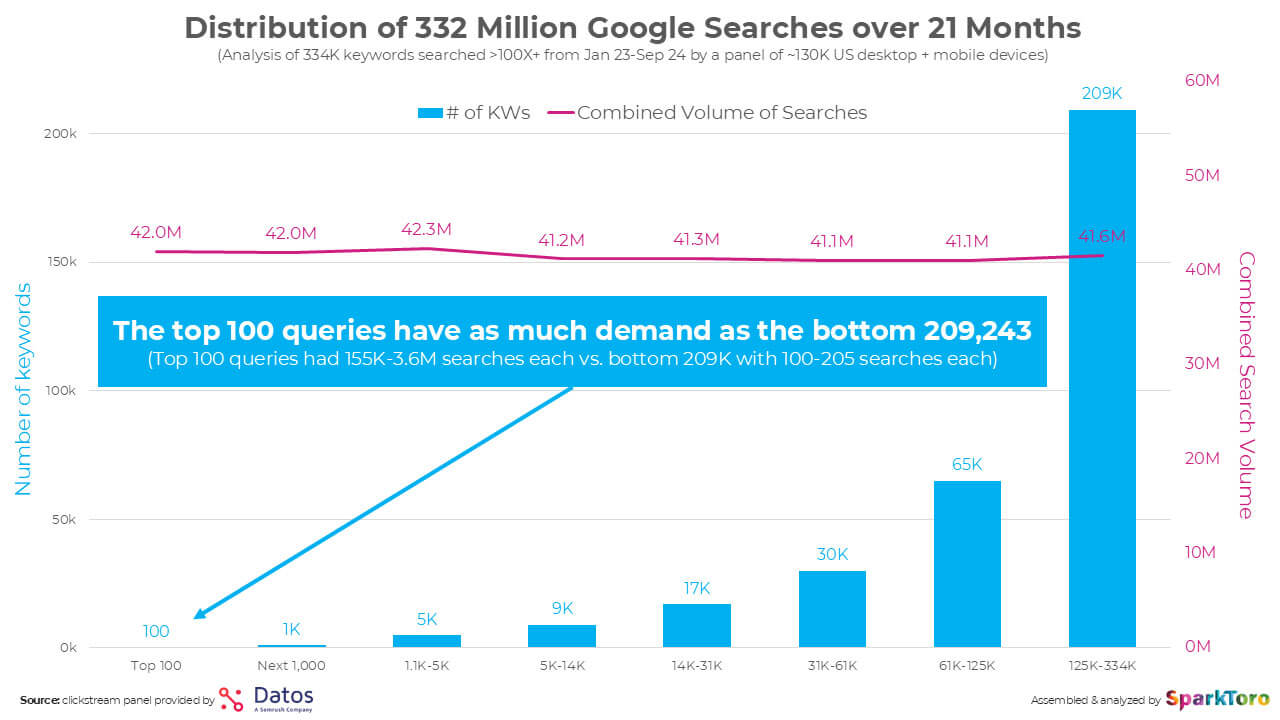
This shift means:
- Users are trusting LLMs more than Google organic results or ads
- This slows traffic to websites, which slows ranking signals
- Shows larger-than-normal declines in traffic value
- The more people stop searching Google, the less opportunity exists there
- Conversely, the more LLMs become household tools, the more opportunity exists in AI search
Google’s death spiral:
- Users distrust ads and poor organic results.
- Google pushes harder on ads to maintain revenue
- More users leave for ChatGPT, Perplexity, and Claude
- Google degrades organic further to drive ad trust
- More users leave
- Repeat
The searches haven’t disappeared. They’ve just moved to places where most businesses are probably not yet visible, and LLMs are not yet well-trained in local recommendations.
Understanding LLM Limitations in Local Search
Large Language Models face a fundamental challenge with local recommendations that stems from their design.
When you ask Google, “Find me a plumber near me,” Google already knows where you are. It has access to your device location through Android, Chrome browser data, IP address, or previous location history. The “near me” part is straightforward because Google controls the devices and browsers most people use.
LLMs don’t have that advantage. They don’t know your location unless you tell them. Some models have memory features and will remember where you’ve said you’re located. Others will ask. Some will simply make assumptions based on context clues in your conversation or guess based on probability.
Once location is established (or assumed), the next challenge emerges: avoiding bias whilst making recommendations.
Search engines like Google have spent decades developing sophisticated algorithms to rank businesses. They consider authority signals, trust indicators, review quality and quantity, website technical quality, content comprehensiveness, backlink profiles, and hundreds of other ranking factors. The process is algorithmic, consistent, and designed to reward merit (at least in theory).
LLMs operate differently. They’re constrained by the need to avoid appearing biased, which means they typically recommend multiple options rather than declaring one business definitively better than another. They pull information from business websites, review platforms, directories, and other online sources to justify their recommendations. However, the vetting process is fundamentally less sophisticated than mature search algorithms.
This creates an interesting phenomenon: search the same local query in an LLM multiple times, and you’ll often get different recommendations each time. Unlike conventional search, which follows a consistent algorithmic ranking, LLM responses vary based on how the model interprets the query in that moment, what data it retrieves, and how it balances its anti-bias constraints.
As seen in the example, the exact same search, performed only three times within minutes of one another in three different chat windows, returns three completely different recommendations.

The practical consequence is that LLMs are currently more easily influenced than mature search engines.
A well-structured website with clean data, proper schema markup, and comprehensive local information can achieve visibility in LLM responses more readily than climbing traditional search rankings.
This window won’t stay open forever. As LLMs mature and develop more sophisticated vetting mechanisms, they’ll become harder to influence. However, businesses that understand how to structure their online presence for LLM discovery currently have a genuine advantage.
Traditional SEO Is Dying - But Discoverability Is Not
From “10 Blue Links” to AI Answers
For 25 years, search worked like this: Rankings → Clicks → On-site content → Conversions
Now it works like this: AI summary → Fewer clicks, but higher intent for those who do click
A typical 2025–2026 SERP now looks like:
- AI summary or AI Overview (consuming 60%+ of screen real estate)
- Ads styled to look more organic (blurred lines between paid and organic)
- Map pack or local results (for local queries)
- Remaining organic listings (often showing surprisingly low-quality results)

If you’re not in that AI summary, you essentially don’t exist for that query.
That’s only if you’re not in the parts of the world that have been converted to Google AI mode as the default experience. Which, for local search, is basically regurgitated Google Maps formatted in a new way.
What GEO and AEO Mean in Plain English
These terms are being thrown around frequently. Here’s what they actually mean:
GEO (Generative Engine Optimisation): Being the answer that AI gives. When someone asks ChatGPT or Perplexity a question in your domain, is your business the one it cites?
AEO (Answer Engine Optimisation): Structuring your content to enable AI to understand and utilise it effectively.
The core principles include:
- Structured, machine-readable content, not just written for humans
- Clear topical authority so AI understands what you’re an expert in
- Trusted, consistent brand signals through mentions, citations, and verification
- Fast, secure websites; same as before, but now it matters even more

This isn’t completely new. It’s an evolution of what good SEO has always been about. Being findable, trustworthy, and authoritative and following E-E-A-T best practices.
These are the core principles we have been following since our inception.
How LLMs Actually Find and Use Your Content
Without getting too technical, here’s how LLMs discover and use websites:
Crawling: Similar to Google, but looking for different signals. LLMs want clean, structured content.
Training data: Some LLMs train on public web data. Your content might be in their training data.
Retrieval (RAG): More commonly, for local terms especially, LLMs use Retrieval-Augmented Generation; they search the web in real-time, pull relevant content, and synthesise an answer.
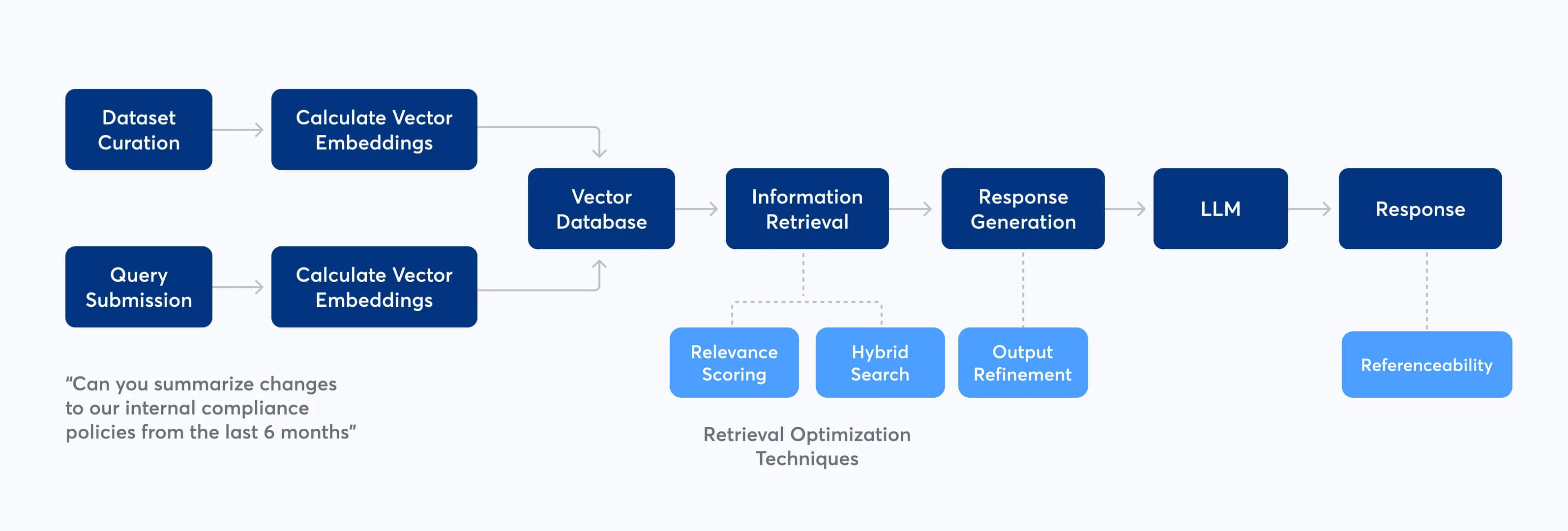
The key touchpoints that need optimisation:
llms.txt: Introduced in 2024 by the open-source AI community (spearheaded by Answer.AI and adopted by the broader LLM development community), llms.txt is a structured file (conceptually similar to robots.txt, but specifically designed for AI) that provides Large Language Models with explicit guidance about your website’s content. It specifies which pages contain your most important information, how frequently content is updated, what topics you’re authoritative on, and how AI should prioritise your content when generating responses. Major LLM providers, including OpenAI (ChatGPT), Anthropic (Claude), and Perplexity, operate crawlers that can discover and utilise llms.txt files when accessing websites. Whilst formal public announcements of support vary by platform, the specification has been widely adopted by the AI community and is increasingly recognised as best practice for LLM optimisation. Unlike generic XML sitemaps designed for search engines, llms.txt communicates with AI in the precise language and structure that models are optimised to understand, dramatically increasing the likelihood that your content will be cited in AI-generated answers rather than being overlooked.
See our llms.txt for example.
Schema and structured data: Schema markup (specifically Schema.org vocabulary implemented via JSON-LD) has been a recognised ranking factor in traditional SEO since Google, Microsoft, Yahoo, and Yandex collaboratively established the standard in 2011. For Large Language Models, however, schema serves an even more critical function. It provides explicit, machine-readable information about entities (who you are, what services you offer, where you operate), relationships (how different concepts and offerings connect), and factual claims (verifiable data points about your business). LLMs can extract this structured data directly, eliminating the need to parse and interpret unstructured HTML content, thereby saving computational resources and reducing interpretation errors. Properly implemented schema acts as a “cheat sheet” for AI, explicitly stating facts rather than requiring the model to infer them from context. Our implementation goes beyond the generic one-size-fits-all templates most platforms use; we dynamically generate schemas based on actual page content, business type, service offerings, geographic context, and local market factors, creating AI-readable data that accurately represents each unique business, rather than forcing businesses into predetermined templates.
Markdown variants: Every page on our platform automatically generates a corresponding .md (Markdown) variant that strips away all HTML complexity, navigation elements, advertisements, sidebar content, and design markup. What remains is pure, structured content: headings, paragraphs, lists, and links in the cleanest possible format. This serves multiple critical purposes for LLM optimisation. First, it dramatically reduces parsing complexity; LLMs can process Markdown significantly faster and more accurately than complex nested HTML with inline styles and JavaScript. Second, it eliminates noise that can confuse AI, including navigation menus, footers, cookie banners, and sidebars that pollute the content signal. Third, it ensures structural consistency; Markdown enforces a predictable format (# for H1, ## for H2, * for bullets) that LLMs are specifically trained to understand. When an LLM crawls your site or retrieves content via RAG (Retrieval-Augmented Generation), it can access the Markdown version and get your exact content in the optimal format for AI comprehension, citation, and synthesis into responses.
Here is what this page looks like in .md format.
The next section covers exactly what sitecentre® has built for this purpose.
What Our Data Shows (And What It Means For You)
A Market-Wide Pattern, Not Just Individual Businesses
Imagine this scenario (because it’s happening to most Australian businesses right now):
Business owners receive 3–5 calls per day from digital marketing agencies. These agencies show a chart of declining traffic. They say, “I bet your phone has slowed down, hasn’t it?” They promise they can fix it. The pitch sounds convincing because they’re describing the exact situation the business is experiencing.
What these agencies won’t reveal:
They can deliver this pitch to any business right now.
Every chart looks the same. All businesses are experiencing this decline, including the calling agency’s own clients, but they won’t show you those charts.
Anyone can cherry-pick one good outlier and present it as their typical result. sitecentre® is showing the systemic reality.
Pattern evidence across the market:
- Competitors’ sites have identical decline curves (sitecentre® tracks them)
- Unknown, unestablished sites are suddenly ranking with no legitimate authority (we know, we’ve built over 4,000 of them).
- Clients switching agencies are still seeing the same patterns because the agency isn’t the problem; the market is
Where, even 2 or 3 years ago, the average business wouldn’t have even taken the call, “marketing agency”... “beep, beep, beep”. Now, they’re telling you what you want to hear, and what they know is true, even without having done any research on you or your business.
A true cold calling dream.
sitecentre® Clients vs The Average
According to SEMrush Sensor, the average Australian service business lost 38% organic traffic year-over-year.
sitecentre® client average sits just above 14%. Without throwing anyone else under the bus, we conducted a study of 50 of the most recognisable SEO agencies in Australia, using a backlink report to determine their client list, and the average drop from them was 55% for the same duration!
Why the difference? Because sitecentre® started preparing for this shift 3–4 years ago, aggressively one and a half years ago, but truth be told, we’ve always done what needed to happen for AI adoption. Good, proper SEO.
When everyone else was still optimising for Google’s 10 blue links, the team was already building for AI answer engines.
Why This Isn’t “SEO Is Dead” (But Traditional SEO IS Dying)
The distinction needs to be crystal clear.
The same number of people still have problems. They’re just getting answers through new surfaces.
- Intent hasn’t disappeared; attention has fragmented
- Strong brands still win disproportionally; trust matters more than ever
- Client retention and word-of-mouth are still the strongest forms of marketing; now, LLMs convincingly sound like personalised recommendations.
- Technical foundations matter even more in noisy, AI-driven systems
The key distinction most agencies are missing:
SEO, as the Cowboys do it, is dying. Old textbook tactics from 2015 (mass pages, keyword stuffing, cheap backlinks) are failing spectacularly.
Even their modern 2023 methods of bulk generating poorly written content, lacking substance, meaning and conviction and passing it off as spectacular.
The fundamentals of being findable, trustworthy, and authoritative, however, matter more than ever.
sitecentre® isn’t doing 2015 SEO. We’re doing what actually works now, and what will work tomorrow. Truth be told, we were doing 2023 tactics in 2020, and 2025 tactics in 2021.
Don’t get me wrong, there are good agencies out there. However, in Australia, I’d confidently say there are fewer than ten options, and only about five are within a reasonable budget, before considering whether they are ethical or not.
Businesses shouldn’t panic. They shouldn’t cancel marketing. They shouldn’t agency-hop looking for magic fixes.
sitecentre® is adjusting and evolving. Most agencies are not. Those that are attempting to adjust don’t have the knowledge, data, or understanding of AI that sitecentre® has spent years developing (and we can prove it).
They certainly don’t have the same ethical standards as we do, and have consistently demonstrated this since day one. Loyalty, transparency and honesty.
The sitecentre® Platform: Already AI-Ready While Others Panic
From Early Adopters to Industry Leaders
sitecentre® has been developing AI technologies for 4+ years, long before ChatGPT made AI mainstream.
Our scale:
- Top 25 most used web technologies in Australia
- Top 500 CMS platforms worldwide
- We manage more Australian websites than any other agency
The nuclear statistic:
According to BuiltWith, out of approximately 1.59 million live Australian websites monitored, only 28,314 sites (1.78%) have implemented critical AI-ready features, such as llms.txt.
Of those 28,314 AI-ready Australian sites, 4,126 are powered by sitecentre®.
That means nearly 15% of all AI-ready Australian websites are powered by sitecentre®.
Consider this: 98% of Australian websites aren’t ready for AI search, of the 2% that are, sitecentre powers 15% as of November 2025.
This is dominance.
Not to mention, only 1,071,480 worldwide have implemented it as of the point of writing this, of which most are improper implementations using dodgy WordPress plugins that don’t actually comply with the implementation guidelines.
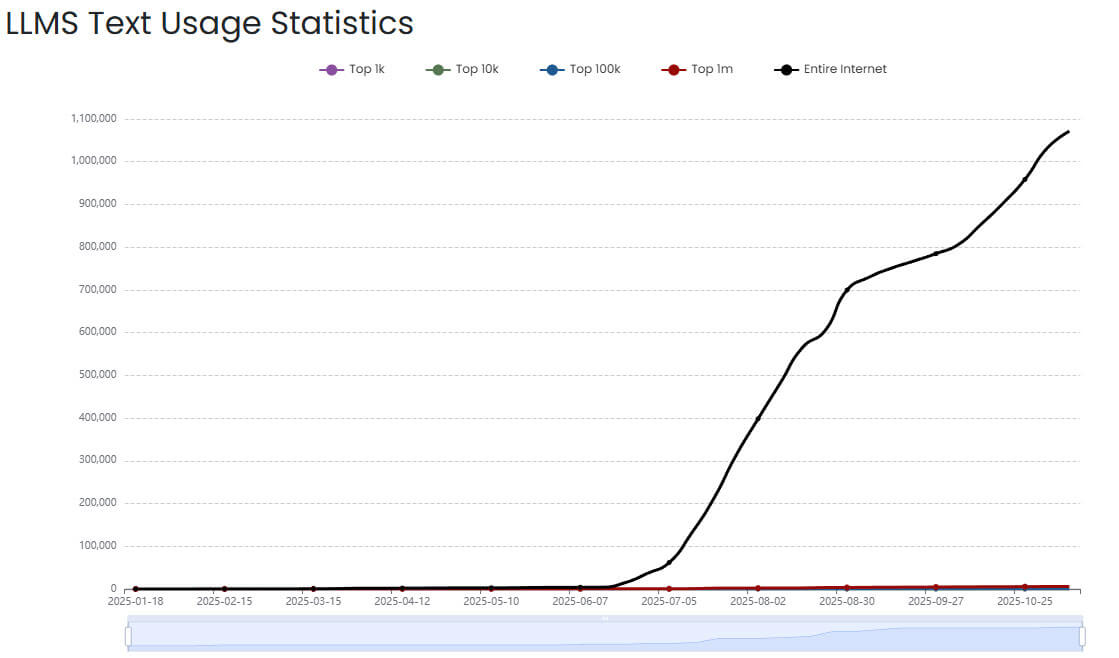
Why We Push Our CMS (Even though you don’t need to)
Addressing the CMS question directly, as there’s often confusion:
- It’s free: Not an upsell, not a hidden cost.
- Implementation speed is 22 hours versus 6 months: When llms.txt became important, sitecentre® rolled it out across 4,000+ sites in under a day. Offshore WordPress agencies can’t match that speed.
- CMS clients serve as the R&D testing ground: These clients receive innovations first. New features, new AI integrations, and new optimisations come to CMS clients before anyone else.
- Custom WordPress plugin available for non-CMS clients: sitecentre® can deliver excellent work on other platforms. We’ve built custom solutions, including a sophisticated WordPress plugin that implements many of these features, but requires heavy modification per instance, as WordPress websites often use different builders, database structures and handle data differently. Hence, a single plugin solution for the masses isn’t as easy as it sounds.
- No lock-in contracts: Clients aren’t locked in. But staying on the platform provides substantial advantages.
What sitecentre® Has Built That Others Can’t Copy
This is where we separate ourselves technically.
llms.txt and AI-specific crawling: An instruction file that tells AI crawlers like ChatGPT, Claude, Perplexity, and Gemini which content is important, how often it changes, and how it should be prioritised.
Even those who have implemented llms.txt haven’t done it to specification. WordPress plugins and automatic tools aren’t handling structured data properly. They’re bolting on afterthoughts. sitecentre® built it into our CMS foundation.
Markdown variants for clean LLM consumption: Every page has a .md version (clean, noise-free, perfectly structured for AI parsing). No navigation clutter, no ads, no sidebars. Just pure content structured exactly how LLMs prefer it.
Intelligent schema (not generic templates): The schema isn’t hand-coded, but it’s not generic either. Sophisticated systems ensure it’s perfect, adjusting to content and being research-based, tailored specifically for each business. Not the one-size-fits-all templates everyone else uses.
Security at scale: sitecentre® has blocked 28 million security threats in the past 6 months across our security stack, more than Australia’s entire population of 27.5 million (as of March 2025, ABS).
Performance that matters: Our global CDN delivers assets faster than 99% of the internet. According to Google’s web.dev documentation, Time to First Byte (TTFB) is a critical performance metric, with a good TTFB being under 800 milliseconds. sitecentre® consistently delivers between 80ms and 200ms; significantly faster than industry standards.

Additional technical advantages built into the platform:
- Intrinsic-size automation: Eliminates Cumulative Layout Shift (CLS) by pre-calculating component heights, preventing the jarring page jumps that hurt user experience and Core Web Vitals scores.
- Multi-tier caching: An encrypted local cache, combined with LiteSpeed server caching and Cloudflare/Bunny CDN edge caching, ensures lightning-fast page loads while maintaining the ability to update content instantly across all cache layers.
- Passwordless admin authentication: Email-verified identity with Cloudflare Turnstile proof-of-human verification, rotating CSRF tokens, and session-based request locks prevent credential stuffing attacks and unauthorised access attempts.
- Intelligent bot detection: User agent fingerprinting, headless browser heuristics, and header sanity tests determine threat levels before exposing any measurement endpoints or sensitive functionality.
- Declarative path firewall: Normalised routes with spam-suffix intelligence intercept common exploit probes (wp-login, XML-RPC, .env files) before they reach the application layer.
- Adaptive LocalBusiness schema: Dynamically generates multi-type schema graphs including legal names, geographic coverage, opening hours, and social profiles, with automatic empty-field pruning to keep JSON-LD clean and valid.
- Sanitised routing: Base-path removal, slug normalisation, and query parameter cleansing stop duplicate-content loops and ensure canonical URLs remain consistent across the entire platform.
The Cowboy Circus: Why Most Agencies Are Selling 2015 Tactics in 2025
The Cold Caller Script (Most Have Heard It)
The pattern is predictable:
They show a declining traffic chart and say, “I bet your phone has slowed down, hasn’t it?” It sounds like they’re reading minds.
They promise to “fix” rankings in 90 days. Conveniently, the contract auto-renews at month 3, before anyone can actually see whether anything worked.
They built 47 suburb pages with slightly different keyword copy-pasted throughout and call it a “comprehensive local SEO strategy.” These are pages Google has been penalising since 2018.
They send a fancy PDF report showing “rankings improved” for keywords that sound relevant, but nobody actually searches for them. Ranking #3 for “emergency plumber inner west Sydney Sunday 3 am” (Yes, we actually saw this keyword and many others on a report) means nothing with zero monthly search volume.
This pattern is familiar to most business owners because these agencies are running the same script on everyone.
What These Agencies Are Actually Doing (And Why It Always Fails)
While sitecentre® was reverse-engineering how Gemini parses entities and building llms.txt implementations into the CMS core, these cowboy agencies were still buying $5 PBN links and wondering why sites got penalised six months later (they likely aren’t wondering, or have even realised).
Their standard playbook:
- Mass page generation: 50+ location or service pages in a weekend, thin content, keyword-stuffed, no research.
- Cheap backlink packages: “100 high-DA links for $500” (all expired domains and blog networks Google flagged years ago and are not currently indexed)
- Copying strategies without understanding: often sitecentre® strategies, 24–48 months after implementation
- Promising “guaranteed rankings” when they can’t guarantee their own clients will still have functioning websites in 12 months
The brutal truth: Most agencies are still teaching “keyword density”, “25 focus keywords”, and “four generic 1,000-word content pieces monthly” like it’s 2014.
Facts about how we differ:
- We don’t limit the number of keywords we focus on; we build the entire website and grow it holistically.
- We don’t focus on density, but on user intent and value.
- We don’t limit content creation or editing to ensure we stay within strict quotas.
The Graveyard: What Happened to Those Who Left
sitecentre® tracks what happens when clients leave, not to be vindictive, but to validate the thesis that short-term thinking creates long-term catastrophes. Although we do think to ourselves, “we tried to warn them”.
Below are four examples of clients who left for other agencies and immediately found out the hard way, and no. These were not cherry-picked, other than knowing they left for another agency, and not due to other circumstances like financial or a business sale; this is typical.

The pattern: Short-term gains from black-hat tactics = long-term penalties. Every. Single. Time.
We’re not sharing this to gloat. We’re sharing it because the cost of choosing the wrong partner compounds faster than you realise.
Why We Refuse to Play That Game
The difference between sitecentre® and the cowboy agencies isn’t just methodology. It’s ethics.
Our Code of Ethics isn’t a marketing page we created to look good. It’s a genuine commitment that has cost us revenue, clients, and growth opportunities. We’d rather lose deals than lie about what’s possible.
Trust us, our seemingly crippling tax debt could really use a healthy cash flow injection, but not at the expense of our integrity.
We won’t run black-hat tactics even when clients don’t understand why they’re dangerous. We’ve watched the cycle play out dozens of times: the agency promises quick wins, uses manipulative tactics, the client sees six months of growth, then Google’s penalty hits, traffic crashes harder than before, and we receive the panicked call asking us to clean up the mess. By then, the damage can take years to undo.
The reality is that ethical SEO is slower initially but compounds over time. Black-hat tactics are faster initially but eventually crater. We’re building foundations that last decades, not generating short-term spikes that disappear when the algorithm catches up.
Truth be told, we can probably outrank any of our existing clients who have been doing SEO for years in a matter of weeks. It just won’t last, and isn’t worth our time.
Most agencies are selling umbrellas in a hurricane. We built the only house with a proper foundation.
Proof We’re Winning the New Game
The Numbers That Matter Now
Traditional ranking reports are theatre. Here’s what sitecentre® is actually measuring:
- AI Summary Presence: How often businesses appear in AI-generated answers for relevant queries
- Entity Mention Frequency: How often AI models cite brands, services, or expertise
- Branded Query Volume: People searching for businesses specifically (the strongest trust signal)
- Conversion Quality Over Quantity: 10 clicks that book jobs beats 1,000 clicks that bounce
Example: Position #5 in Google (down from #2 last year), but #1 in AI summaries for this query across ChatGPT and Perplexity.
The Google position will matter less every quarter. The AI citation will matter more. We can’t win on Google whilst they continue to prioritise the worst results imaginable. Until this shifts (according to reports, pressure is mounting), we will continue to dominate where results are moving too.
What’s Shipping Next (3–12 Month Roadmap)
Lead Management and Call Intelligence
The problem most businesses face: Leads are falling through the cracks. Someone calls, someone enquires via the website, someone messages on Facebook, and the details get lost between phone, email, and job management systems. Businesses are losing revenue they don’t even know about.
What’s coming: Full journey tracking from first click to completed job. AI transcription and summarisation of every call.
Natural language queries, such as “who called about a blocked drain in North Lakes last week?” will return the call recording, name, details, and all related information about that engagement.
Other natural queries like “Out of those who called and booked a job and then cancelled later on, what was the main reasons given, and the average duration between calls”. The model replies with the data, the calls, and your question perfectly answered.
One more example we think will be popular “What is the main reason given for genuine enquiries not resulting in a booking, and how can we adjust our phone script to counter it”. Will return exactly as expected, a table of reasons, a tally of times it was used, as well as the response given each time and how the script could be adjusted to improve phone conversions.
Integration with ServiceM8, ServiceTitan, and Aroflo ensures that leads, calls, and jobs are all connected. Businesses will finally see which marketing efforts actually pay off and which are a waste.
AI Chat Trained on Your Website
The problem: A visitor has a question at 10 pm. You can’t answer. They call a competitor that offers 24/7 service.
What’s coming: AI that knows the entire website, every service, every suburb covered, every FAQ and company-specific pieces of data we decide to share with it.

Visitors can ask questions via voice or text and get expert responses. It pushes for their name, email, and phone without being pushy or mandatory. It’s conversational without giving away information like pricing or specifics.
Trained to foster a quick relationship, build trust, assure them that we will reach out with urgency, and reassure them that their problem is in good hands.
Every question it answers is logged for further training of the model. These become content opportunities, FAQ additions, and insights into what visitors actually care about. Your data isn’t shared with anyone else.
Content Intelligence & Automation
The problem: Most businesses have pages that haven’t been updated in 3 years. They don’t know which ones are dead weight. Blogs haven’t been touched in 8 months. They don’t know what to write about next.
What’s coming: Automatic audits using Google Search Console, Google Analytics, and proprietary data.
The system informs the team which pages are underperforming, which should be deleted, which should be refreshed, and where internal links should be redirected.
AI generates content suggestions based on the E-E-A-T principles (Experience, Expertise, Authoritativeness, Trustworthiness), but the team manually implements them. This isn’t auto-generated spam; it’s AI-assisted human editorial and data-backed insights.
Social Media Automation and Distribution
The problem: Most businesses publish a blog post or receive a great review, and it just sits there. No social media promotion. No distribution. The content that could be driving engagement simply exists in isolation.
What’s coming: When you publish a blog article, the system automatically generates and schedules social media posts across your platforms. When you receive a 5-star review, it creates a shareable social post highlighting that feedback. When you update a service page with new information, relevant social content is automatically queued.
The system includes sophisticated flow management to prevent flooding your audience. It understands posting frequency limits, optimal timing for your specific audience, content variety requirements, and platform-specific best practices. You won’t accidentally post the same type of content three times in one day or overwhelm followers with constant promotional material.
All content is written by AI, but it is fully editable before posting. You maintain complete control; the system just handles the tedious work of content creation, scheduling, and distribution across multiple platforms. Think of it as having a social media manager who never sleeps, never forgets to post, and always maintains a consistent brand voice.
The Next 3–5 Years (And Why Waiting Costs You)
Where AI Search Is Heading
Industry analysts are clear about what’s coming:
Gartner predicts that search engine volume will decline by 25% by 2026, primarily due to the rise of AI chatbots and virtual agents.
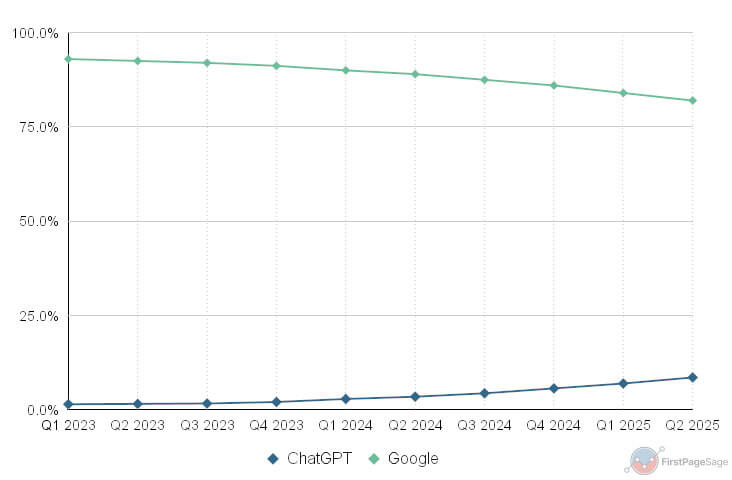
What this means:
- More personalised, context-aware answers; AI will remember past searches and preferences
- Commerce inside AI experiences: booking appointments, making purchases, getting quotes without ever visiting a website
- Stronger emphasis on trust, authority, and verified brands; AI will favour established entities over unknowns
The inconvenient truth about current “winners”:
Those winning in traditional Google SEO right now are often doing garbage tactics. Mass pages, thin content, manipulative links. Google is seemingly prioritising this because it drives users back to ads.
This won’t last. LLMs don’t think that way. Google has already shifted heavily towards AI answers anyway.
sitecentre® transparency, continued development, and innovation will continue to dominate. Yes, traditional positions are down for everyone. However, holistically, AI search visibility has increased significantly.
The Cost of Waiting
Every month that businesses delay AI optimisation, they’ll lose ground and struggle to reclaim it.
The AI training sessions are currently underway. Content is either being indexed and understood by LLMs right now, or it’s being ignored.
Waiting until “next year” means competitors who start today have months of entity-building, citation accumulation, and trust signals ahead.
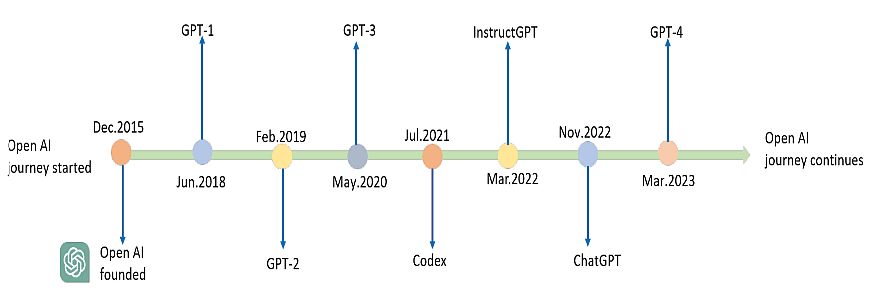
You can see the long duration between ChatGPT model releases; often, data is stale until new releases. Whilst this is shifting with the introduction of RAG, changes made today may not be discovered for one, if not two, releases, if you’re lucky.
Historical precedent:
Historical data from the 2008 financial crisis and the COVID-19 pandemic consistently show that businesses that maintained or increased their marketing efforts during downturns emerged with significant market share gains over competitors who reduced or eliminated their marketing.
Historical data from the 2008 financial crisis and the COVID-19 pandemic consistently show that businesses that maintain or increase their marketing efforts during downturns emerge with significant market share gains. According to IPA research by Les Binet and Peter Field and McKinsey analysis, businesses that cut marketing during recessions typically require 3–5X the investment to reclaim lost market position compared to competitors who maintained visibility.

The pattern is consistent. Downturns are when market share is bought. Those who keep visibility own the recovery. Those who go dark spend 3X to reclaim the ground they lost.
What Will Separate Winners from the Rest
Over the next 3–5 years, these factors will separate thriving businesses from those struggling:
- Owning your platform and data versus renting on a closed SaaS where implementation can’t be controlled
- Technical excellence: speed, security, and structure matter more in AI-driven systems
- Being visible in LLMs, not just Google; attention is fragmenting, requiring visibility everywhere
- Ability to adapt quickly when platforms change (and they will change constantly)
- Ethical, transparent strategies that build durable brands instead of chasing algorithm loopholes
Essentially, everything sitecentre® has been doing for 5 years while others chased shortcuts.
The sitecentre® Commitment
Honesty about what’s possible. Even when it’s not what clients want to hear. sitecentre® can’t promise that businesses will return to 2019 traffic levels. Nobody can, honestly. However, the team can demonstrate where the opportunity actually lies.
Continuous innovation: We don’t wait for solutions to arrive; we build them. The 4,000+ AI-ready sites weren’t an accident. They were 2 years of development while others were asleep.
Long-term resilience over short-term spikes: We’re building digital presence for the next decade, not the next quarter.
Ways sitecentre® Can Help Right Now
- Full SEO campaigns: on-page, technical, and off-page optimisation with AI-readiness built in
- Local dominance strategies: map pack, AI, traditional organic, and review generation
- New websites or rebuilds: custom-built on the AI-ready platform
- Consulting or training: for businesses with in-house teams needing strategic guidance
The Closing Truth
If you’re tired of being lied to, if you want an agency that will tell you the truth even when it’s not what you want to hear, if you want to be ready for where search is actually going instead of where it was five years ago, let’s talk.
sitecentre® can’t promise rankings. Nobody can right now. The metrics are broken, the platforms are shifting, and anyone promising otherwise is either lying or ignorant, or worse. Both.
But sitecentre® can promise:
Clients will always know exactly what’s happening and why. They’ll gain direct access to someone who genuinely understands this technology, and they’ll be positioned for where search is headed, not where it has been.
The harsh reality for those who left:
sitecentre® has already seen huge SEO declines from clients who left for cheaper agencies or bigger promises.
Those who’ve seen some growth elsewhere? We can verify that it’s coming from temporary factors, such as an influx of thin pages that will eventually be penalised, or short-term ranking movement before Google catches the manipulation.
The majority, though, immediately lost positions and have failed to regain them. Some would take years to build back, even through us. The damage was done.
Failure to update pages in a timely manner, keep them relevant, distribute quality links to them, and maintain strong signals means it all comes crashing down.
We’ve watched it happen dozens of times.
Competition can’t replicate sitecentre® strategies as they have in the past.
This new era will favour our dedication and highlight our strengths more than ever before.
The cowboys are running out of textbook pages to copy. The advantages sitecentre® has built are architectural, not tactical.
Not only can they not copy, but they also won’t even see what happened.



